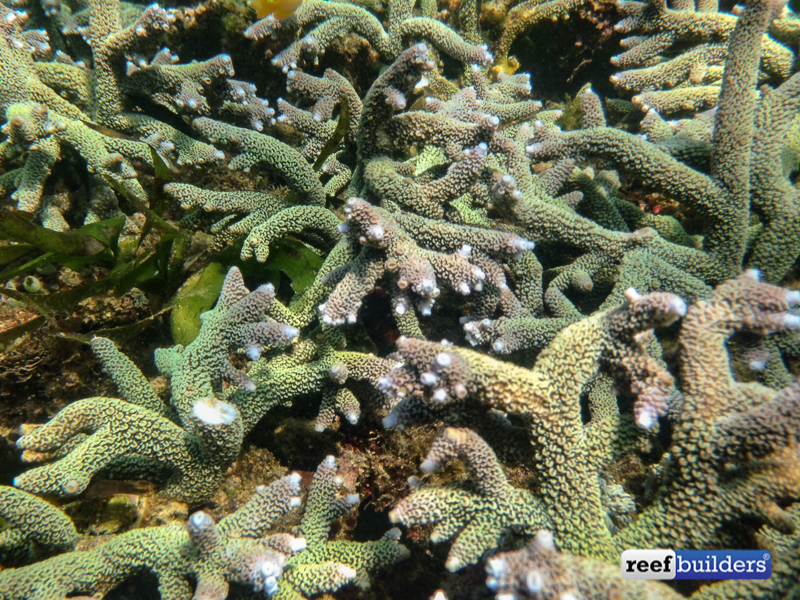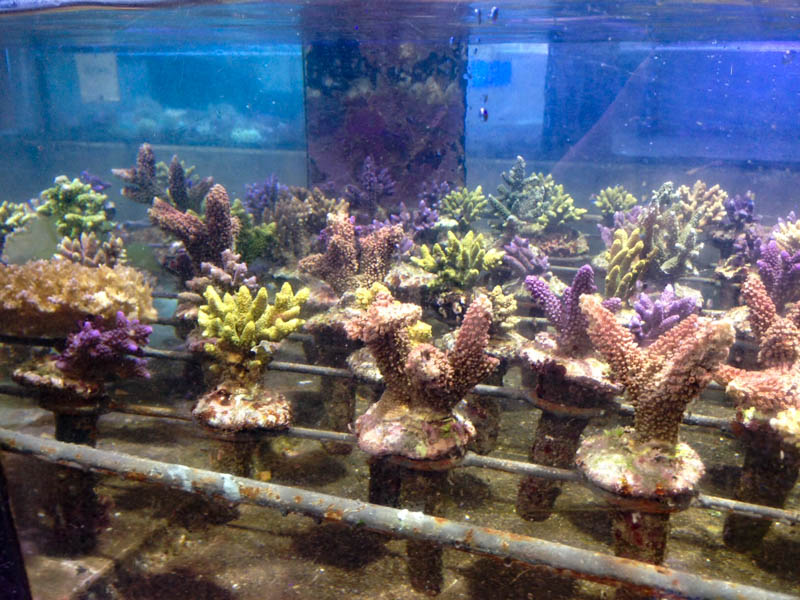We’ve spent the past two month traveling around Indonesia to answer one question, do you know where your corals come from? To find the answer, we met with coral farmers, dove with coral collectors and toured export facilities in Bali and Jakarta to get the full picture of how corals get from farm to tank.
If you’ve been following along with our travelogue, you will remember when we visited the coral farm in Serangan, which is a good place to start this last installment of our Reefbuilders Indonesia Travelogue.
Lets be clear; there is no fed-ex overnight from Serangan to your doorstep and the story of how corals get from farm to tank is maybe a little more complicated than you think. Before corals can be exported, even before they can be harvested to set up a coral farm, the paperwork begins.

There are really two steps involved in getting corals from farm to tank; collecting, growing and maintain the corals in the farm & collecting farm raised corals and exporting them. I will focus more on part two of this process and save the how to set up a coral farm discussion for a later date.
Here in America, it is remarkably simple to pick out a few corals online and have them sent straight to your home. As a hobbiest you can put them in your tank, grow them, frag them and send them to your friends across the country. Within the USA you don’t need a permit or a license to do this, and while business do require individual import permits to legally import corals, once these corals cross the border, all the hard work is done and you can only sit back and enjoy them in your home.
In Indonesia the industry of collecting and exporting corals is highly regulated. Coral farms are audited yearly and have specific quotas for the amount of corals they can grow. Wild corals collected for farming are governed by government issued collection permits and local CITES permits are required to legalize the broodstock.

The export of coral (wild and farmed) from Indonesia is regulated by a limited supply of species specific CITES permits which are allocated to exporters throughout the year. Quotas are given out based on your previous sales, allocation and growth and come with a particular window in which they can be used. If all quotas are used before new ones are issued exporters end up with customers eager for new shipments but with no permits to export.
The CITES system in Indonesia, for collecting and exporting corals, is convoluted and differs from other coral exporting countries. For example in Australia corals are exported by weight, and the exporters write their own CITES permit with the species and weight they want to export, and where as Indonesia has separate permits for wild and cultured corals, Australia can only export wild harvested corals.
We agree with the CITES system in Indonesia, although it is complicated, it deters a free-for-all mentality in the industry which could lead to over exploitation of the resource, wild corals in particular. We did see room for growth in regards to farmed (cultured) corals and saw that coral collectors and exporters are expanding indoor and outdoor coral farms, while the government continues to add more cultured coral permits to the export quota each year.

While in Indonesia we visited some excellent facilities with state of the art equipment rivaling similar wholesale facilities in the USA, and with the rise of Facebook, Instagram and other social media sources, exporters are becoming more in-tune with the consumer market and see the benefits of culturing popular aquarium corals for export.
Exporters in Indonesia see the positive impacts coral farms can have not only for their business, but also as a source of income to coastal island communities who may otherwise resort to destructive fishing practices to survive. When done correctly coral farming can reduce the harvest of wild corals for export and instead turn one wild colony into hundreds of new colonies for export or even to re-populate damaged reefs.
Colonies of Acropora like the blue Acropora tenuis, or Acropora robusta have been growing at Serangan for several years all from one original colony. These corals do so well they can quickly outgrow their tables and hundreds of new frags are replanted and sold each year. It is important to note that full colonies are not collected from the wild since a few large branches is all you need for broodstock to propagate on the farm.

Coral collectors have returned to see these original collection sites and report that previously collected corals continue to thrive on the reef. Interestingly they also indicate that farmed corals often do better after they have been planted on the farm, and have even grown bigger than their original size on the reef.
We have seen first hard where corals are collected and most importantly met many people from all walks of life who are involved in coral collection, coral farming and coral exporting. There is more we could write about this topic and surely will in the future, but we wanted to focus on some of the challenges exporters face which allows us to buy, sell and trade corals with ease.
We have spent the last few days in California admiring our hand picked corals from Indonesia, and contemplating their journey across the globe. So at least for these particular corals, we can say with confidence, yes we do know where our corals came from.



